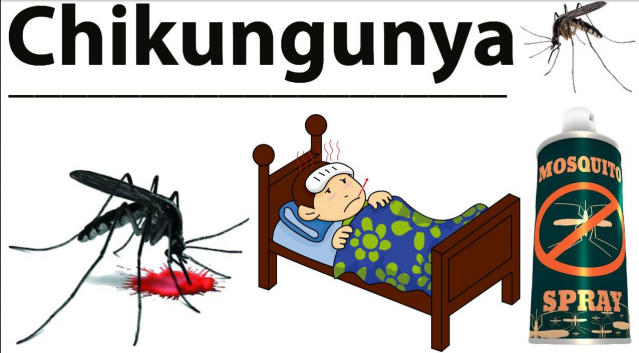Table of Contents
CHIKUNGUNYA
Chikungunya is an infection caused by the chikungunya virus (CHIKV). (RNA virus)
Chikungunya is a viral disease transmitted to humans by mosquitoes. It causes fever and severe joint pain. Other symptoms include muscle pain, headache, nausea, fatigue and rash.
Most commonly, the mosquitoes involved are Aedes
aegypti and Aedes albopictus, two species which can also
transmit other mosquito-borne viruses, including dengue.
CHIKUNGUNYA
First described during an outbreak in southern Tanzania in 1952
The name “chikungunya” derives from a word in the Kimakonde language, meaning “to become
contorted”, and describes the stooped appearance of sufferers with joint pain (arthralgia).
TREATMENT
There is no specific antiviral drug treatment for chikungunya. Treatment is directed
primarily at relieving the symptoms, including the joint pain using anti-pyretics, optimal
analgesics and fluids. There is no commercial chikungunya vaccine.
ALTHOUGH NOTES

Researchers from Indian Institute of Technology (IIT) Roorkee have identified two small potent molecules Pep-I and Pep-II, for their inhibitory activity to treat Chikungunya disease.
The antiviral activity of these molecules was so high that their small amount was able to achieve almost 99% reduction in virus.
Dengue is estimated to infect 5.8 million people in India every year, costing the country over $1B annually.
POSSIBLE ANSWER
• Oxitec s a British biotechnology company which develops genetically modified insects to assist in insect control.
• Oxitec’s technology uses genetically modified male Aedes aegypti mosquitoes that carry a dominant lethal gene. When male GM mosquitoes mate with wild female mosquitoes the
lethal gene is passed on to offspring. The lethal gene in the offspring kills the larvae before they reach adulthood.
NOTES

• First released in Brazil, Oxitec’s mosquitoes have demonstrated to reduce the local populations by more than 90%, whereas insecticides only affect 30%. In addition, this strategy only targets a specific mosquito strain and does not produce any toxic compounds that could affect their predators, making Oxitec’s the most eco-friendly solution so far to
control the spread of infectious diseases.
• The World Health Organization (WHO) itself backed the engineered mosquitoes during last year’s Zika outbreak. The company released 10,000 of them in one of the Cayman Islands, drastically reducing the local mosquito population.
THE NUMBERS

Chikungunya cases increase by 70% since 2013 Haryana saw an almost 100% spike in chikungunya cases from 2013 to 2017, according to the National Health Profile 2017
(prepared by the Central Bureau of Health Intelligence (CBHI)
The number of clinically suspected chikungunya cases increased from 18,840 to 63,679 from 2013 to 2017, or by 70 per cent in India.
THE NUMBERS
• Several states saw a significant spike in the number of cases of the vector borne disease. Haryana saw the biggest spike, 99 per cent, from 1 case in 2013 to 240 in 2017.
• Delhi followed with the number of cases increasing by 51 times and Rajasthan saw a 20 times increase of chikungunya cases in the same period. The survey also shows that in 2017, Karnataka had the maximum percentage of clinically suspected cases at 51
per cent, followed by Gujarat and Maharashtra at 12 per cent.
CHIKUNGUNYA SLIPS UNDER DENGUE RADAR
• A new study by the Indian Council of Medical Research – National Institute of Virology
• Cases of chikungunya were observed throughout the year while dengue spreads mainly during the monsoon, the study showed. Because of similar clinical symptoms, there is also
greater difficulty in accurate diagnosis
• Multi-site study as part of the Global Health Security Agenda.





















 WhatsApp
WhatsApp